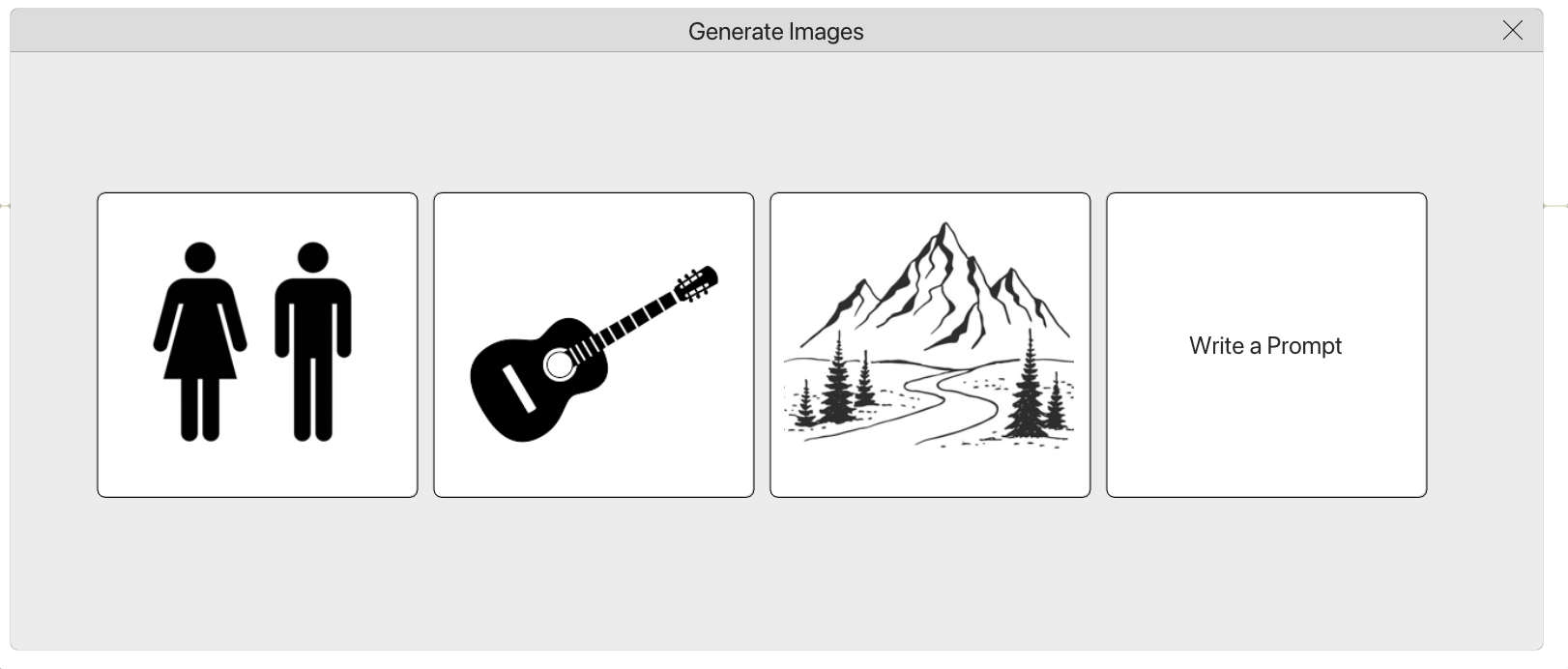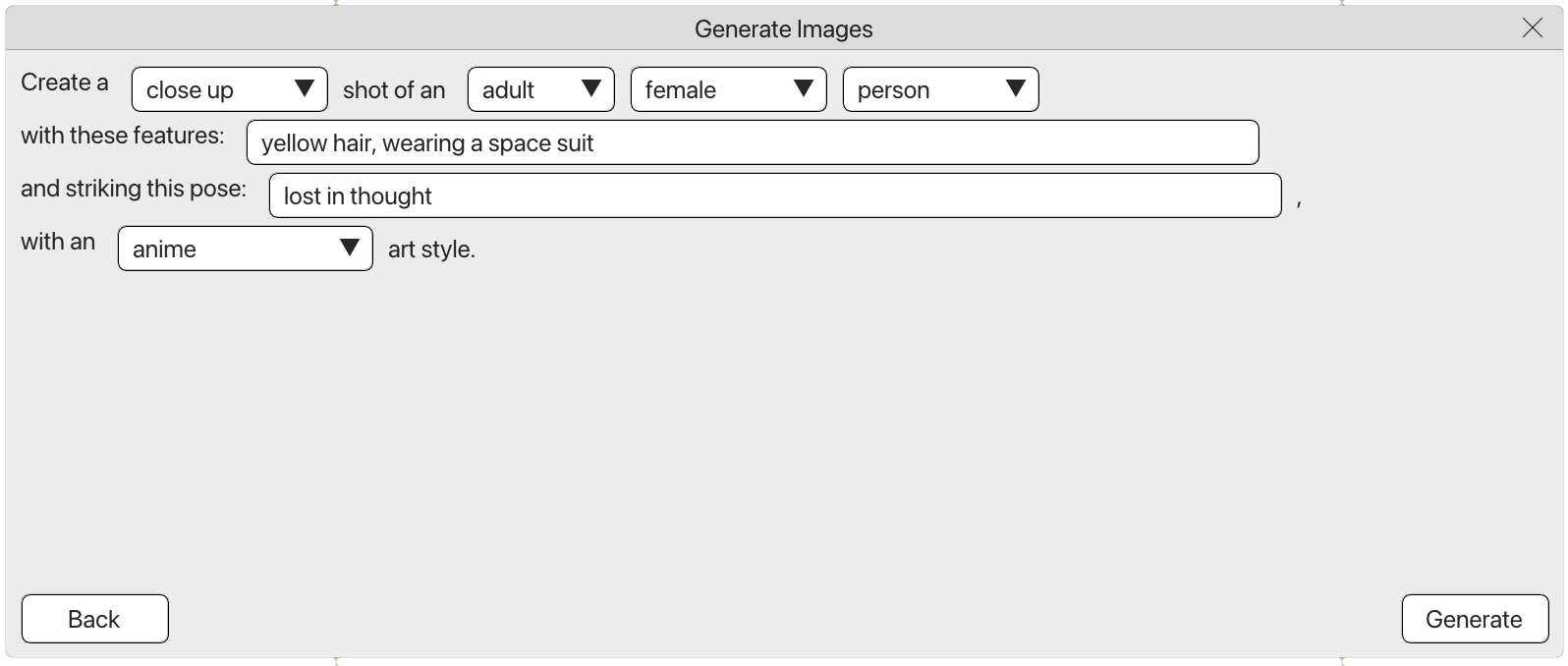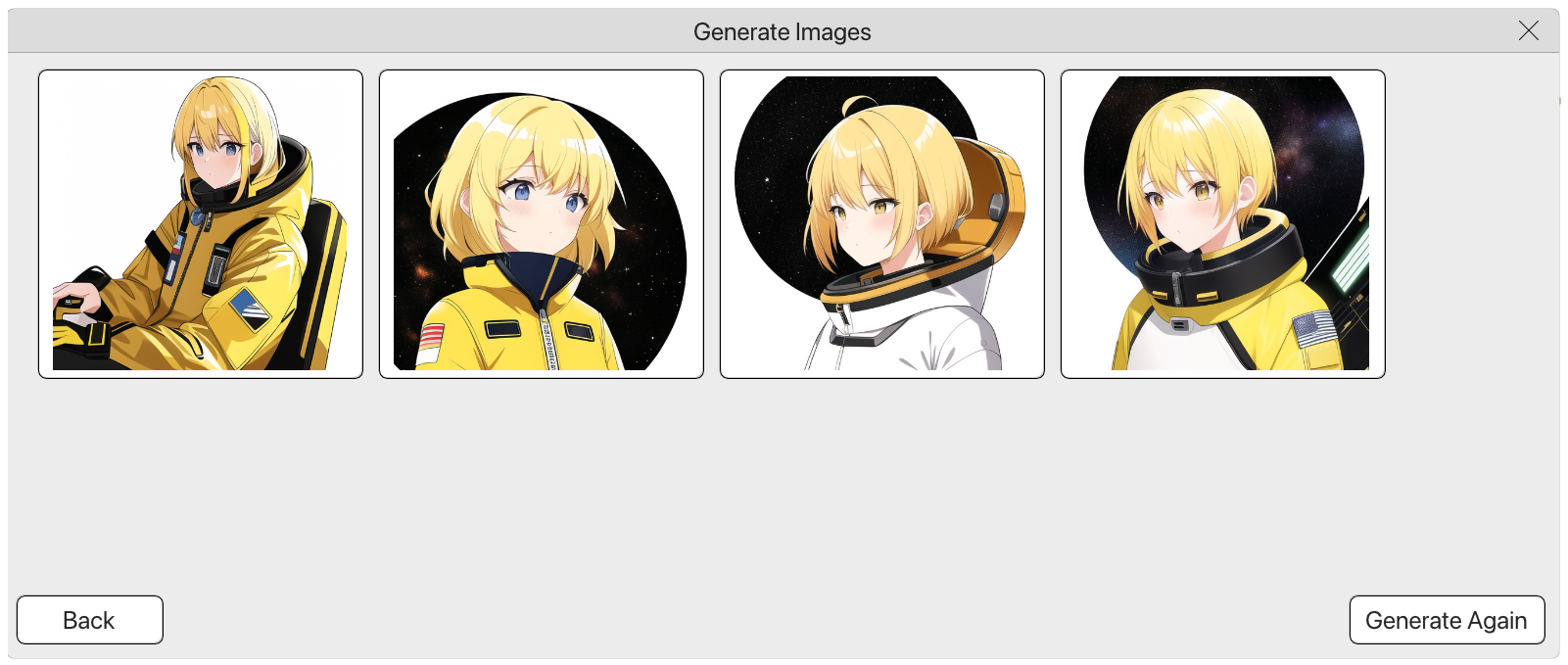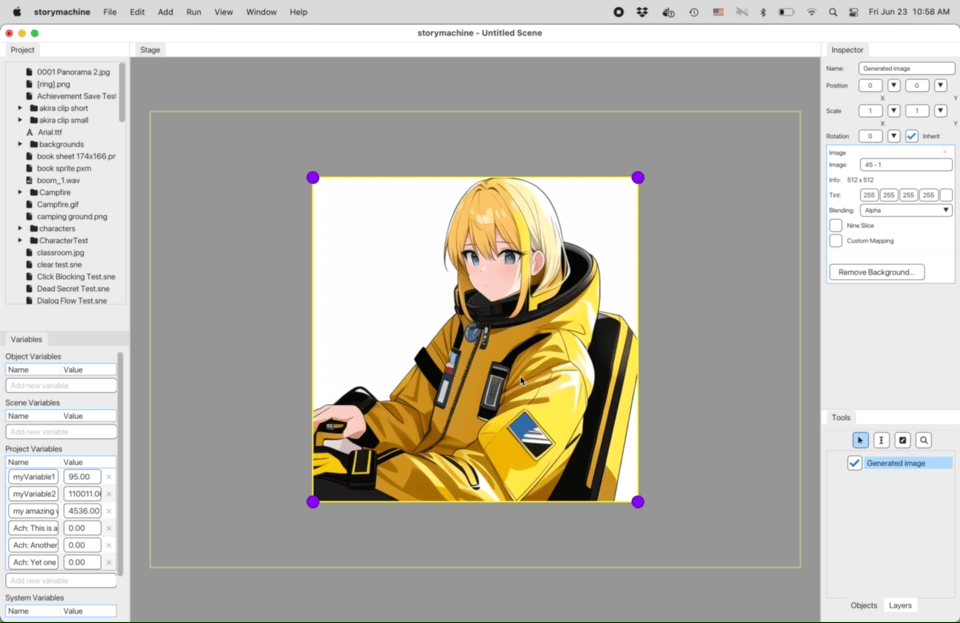With Story Machine, you can draw your own art or use built-in AI image generation tools. Story Machine provides a simple interface to AI image generation, which can be used to quickly and easily compose scenes, experiment with character designs, or create placeholder prototype art.
Table of Contents
A note about AI art
AI image generation is a powerful tool, but the technology is also very new. There are many open questions about whether AI art is ethical, copyrightable, or even good art. We expect the technology–and the debates surrounding it–to continue to change and evolve over the next few years. One thing seems clear, though: some form of AI technology is here to stay. With Story Machine, our goal is to find practical ways that this tech can be used to accelerate artists, ideate concepts, and prototype design ideas. We don’t have all the answers, but if you’re interested in the AI design workflow we’ve built for our own games, see the Sample AI Workflow, below.
AI Image Generation
Images can be automatically generated in Story Machine via the Window > AI Image Generation menu. Rather than write a prompt, Story Machine guides you through the process of creating an image.
-
Select the type of image you want to generate. Guides are provided for People, Objects, or Backgrounds.

-
Each guide provides options about your image, including style, contents, and color.

-
If you prefer to write your own prompt, select the “Write a Prompt” button.
-
Click the “generate” button to produce several images based on your input. If you don’t like any of the options, click Generate Again to make more.

-
When you’ve found an image you like, clicking on it will add it to the scene as a new game object.
Safety
While Story Machine does not apply any filters to the prompts or guides that you submit to it, many of the AI services it leverages enforce restrictions to ensure that generated images are not offensive. Prompts that these services deem dangerous may result in an error.
Removing the Background
Once you’ve created an image, you can use the Background Removal Tool to remove the background. See Image documentation for reference.

Sample AI Workflow
This section describes our own workflow for creating the game BEACON’S BLUFF in Story Machine, using a combination of AI generated images and traditional art.
At Robot Invader, our process for video game development usually goes through concept, prototype, and finally production stages. The concept stage is just a high level idea, but the prototype stage is where we prove the idea will work. Prototypes usually involve building simple game mechanics with temporary art just to test things out. If the prototype isn’t fun, we change it a little and try again. Through this process the game design can change significantly: one of our games began its life as a stealth game and ended up a puzzle game. The goal is to iterate the idea as quickly as possible until it becomes compelling, and for that reason we use the most basic of temporary art for this stage–often just untextured boxes or scribbles. Once we understand what the game will be and how you will play it, we move into the production stage and start building the game, with real art by our art team. This is a pretty standard game development process.
For BEACON’S BLUFF, we augmented this workflow with AI art. Specifically, we used AI image generation to generate art to use in the prototype stage. Instead of grey box test art or programmer scribbles, we generated images based on our concept and hooked the game logic directly up to them to test our ideas. Once we finished with the prototype stage, we handed the images to our lead artist, who used them to create new art from scratch.
We were surprised by the benefits of this approach. First and foremost, our concept and prototype ideation phases were dramatically accelerated. By exploring ideas with AI art we honed in on our concept and started to build gameplay art extremely quickly. These phases usually take us weeks or months, but for BEACON’S BLUFF we completed them in a week.
![]() Left: AI generated radio from early BEACON’S BLUFF prototype.
Right: Hand-made final production art.
Left: AI generated radio from early BEACON’S BLUFF prototype.
Right: Hand-made final production art.
Second, and more subtle, using AI art increased the quality of our prototypes. Usually, when we transition from temp art in a prototype to real art in production, the addition of real art reveals all sorts of gaps in our design that were not evident with temp art. But with AI art, the prototype looked “real” enough that we covered those cases before we reached production. Our production phase became mostly a matter of replacing AI art with human art, a much simpler process than we usually expect.
Finally, using AI art to prototype meant that our game was playable and presentable much, much earlier in its design process than normal. We were able to have others play it and get feedback on the game play (notoriously difficult with prototype art!), we were able to show the game to investors and press, and even create promotional materials very early in the development cycle.
The final version of BEACON’S BLUFF does not contain any AI art. But by using AI image generation to accelerate our prototypes, we shortened our total development cycle by several months at least. You can play BEACON’S BLUFF now!